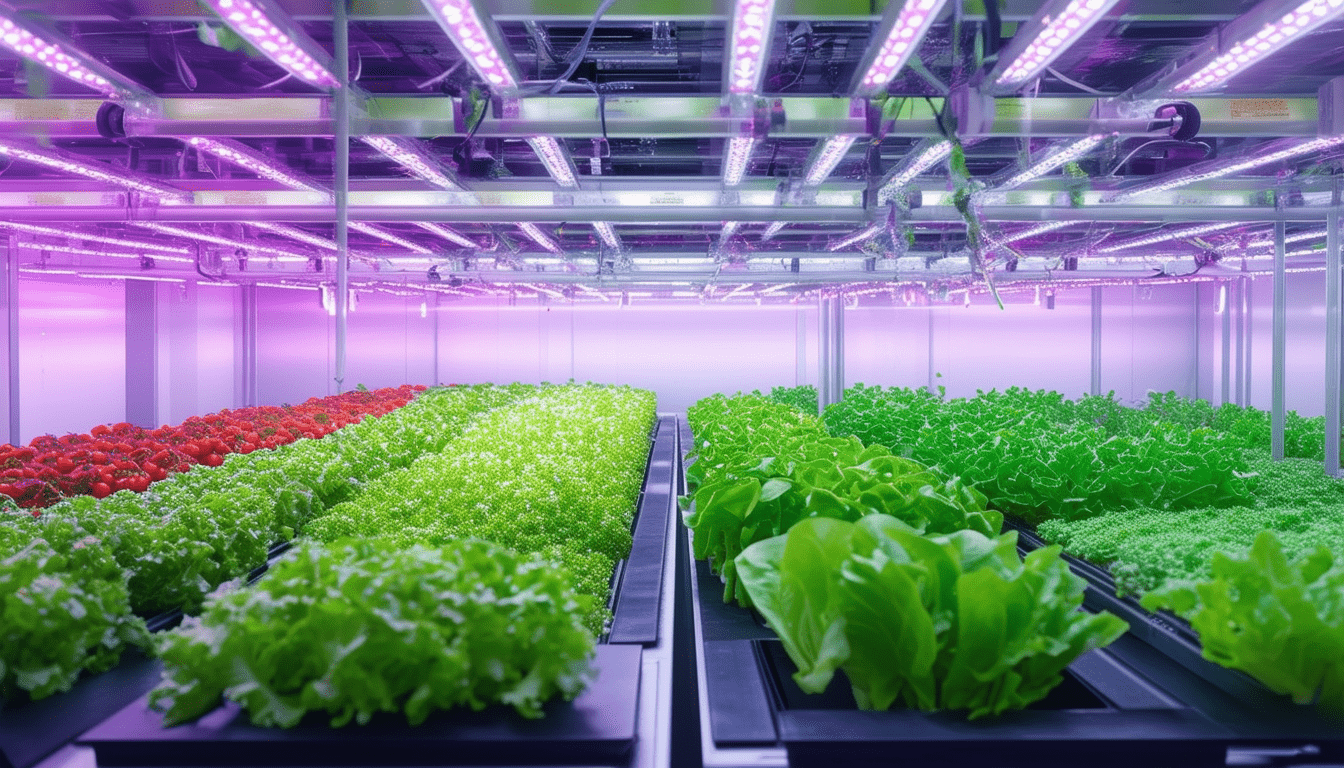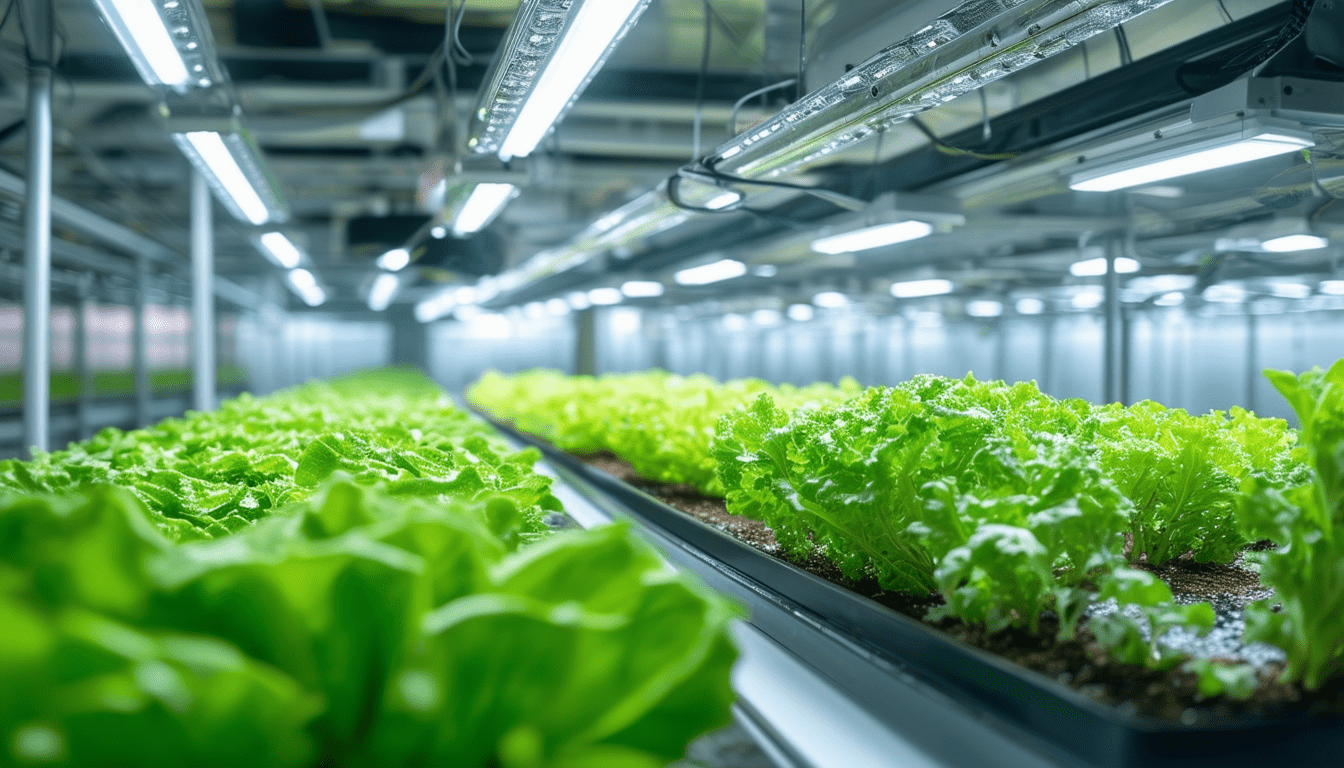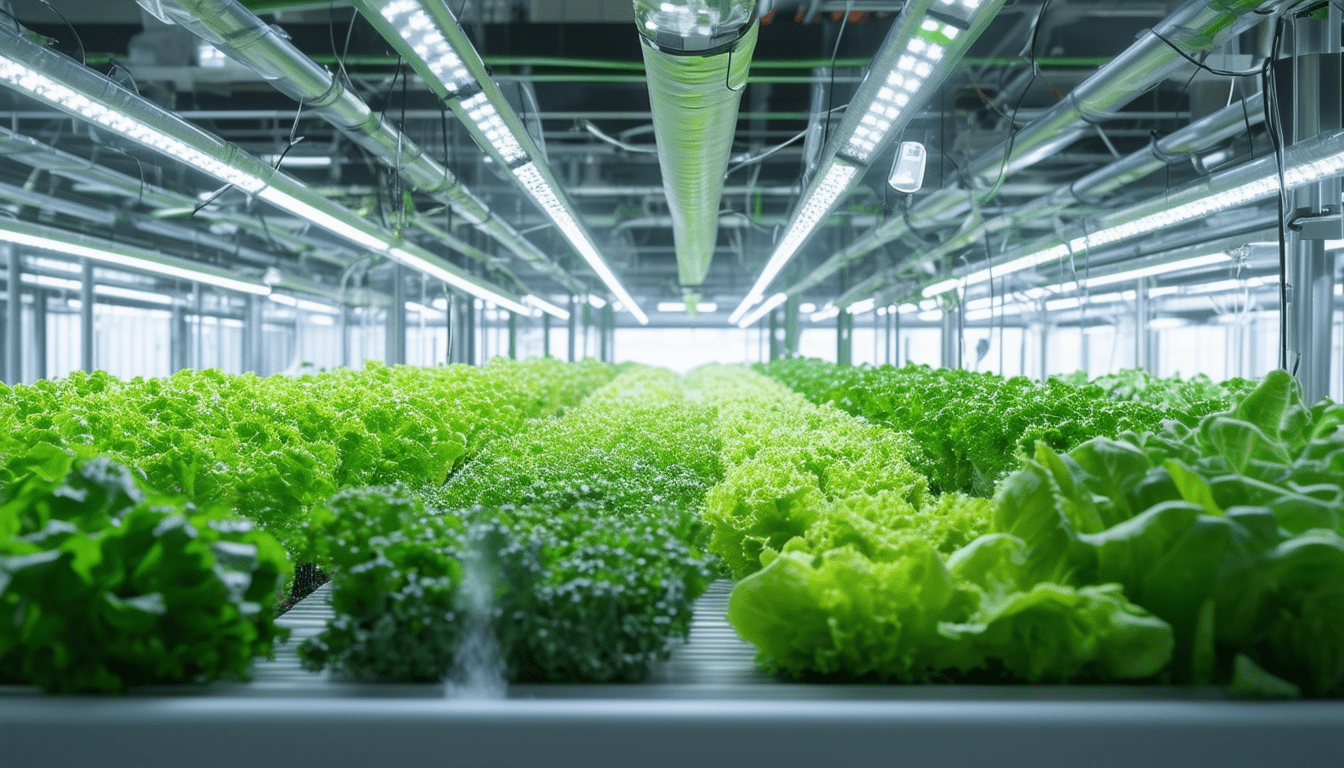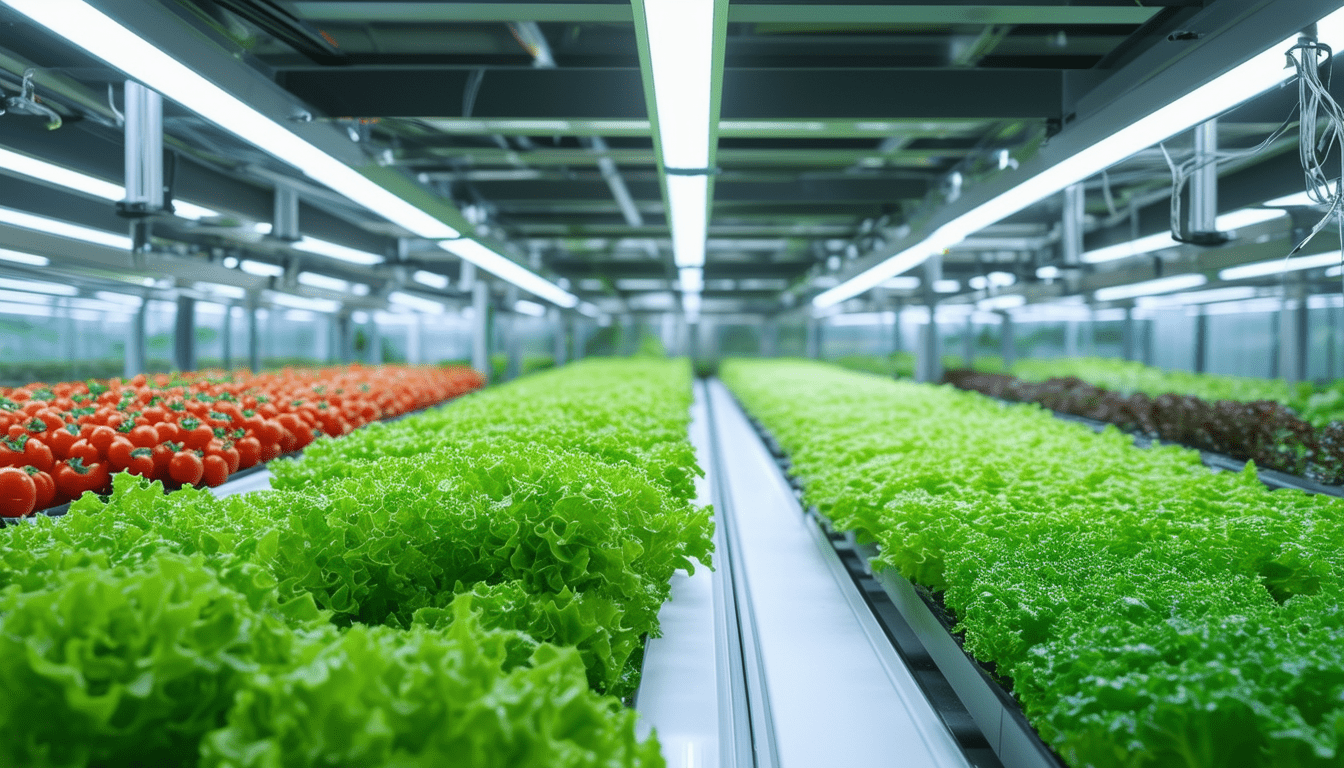Understanding hydroponics: A guide to soilless farming
|
IN BRIEF
|
In today’s rapidly changing agricultural landscape, hydroponics has emerged as a revolutionary technique for growing plants without soil. This innovative methodology allows growers to cultivate a wide variety of plants, from fruits and vegetables to herbs, by using a nutrient-rich water solution. Hydroponics not only enables year-round production but also significantly reduces water usage compared to traditional gardening methods. This guide aims to unpack the fundamentals of soilless farming, explore its numerous benefits, and provide practical insights into setting up a hydroponic system for beginners and seasoned cultivators alike.

Hydroponics represents a revolutionary approach to agriculture that enables the cultivation of plants without the need for soil. This innovative technique utilizes a nutrient-rich water solution to support plant growth, making it an attractive option for growers in various environments. This guide aims to elucidate the principles of hydroponics, its advantages and disadvantages, and its implementation methods.
What is Hydroponics?
Hydroponics is defined as the method of growing plants using a water-based solution that contains the essential nutrients required for growth. This system allows for year-round cultivation, irrespective of local climatic conditions, soil fertility, or land availability. By leveraging a soilless environment, hydroponics directly delivers nutrients to the roots, thereby promoting faster and more efficient growth.
Benefits of Hydroponic Farming
The advantages of hydroponic farming extend beyond the absence of soil. First and foremost, water usage is significantly reduced as compared to traditional farming methods, since hydroponics recycles water and minimizes loss due to evaporation or runoff. Additionally, this method enables precise control over nutrient delivery and system management, allowing for greater crop yield and quality.
Environmental Benefits
Hydroponics presents various environmental benefits that make it a sustainable farming option. Because there is no soil involved, the need for herbicides and pesticides is diminished, leading to less chemical runoff that could harm local ecosystems. Furthermore, hydroponic systems can easily be set up in urban areas, contributing to local food production and reducing the carbon footprint associated with transporting food over long distances.
Disadvantages of Hydroponic Systems
Despite its advantages, hydroponics also has a few drawbacks. The initial investment in infrastructure and technology can be high, which may deter some potential growers. Moreover, hydroponic systems require a consistent monitoring of pH levels and nutrient concentrations, necessitating a certain level of expertise. Additionally, a power failure can lead to adverse effects on plant health, highlighting the importance of reliable energy sources.
Common Types of Hydroponic Systems
Various hydroponic systems are commonly employed for different cultivation purposes. The most well-known among these include nutrient film technique (NFT), deep water culture (DWC), and aeroponics. Each type has its own setups and methods, allowing growers to choose a system that aligns best with their requirements and capabilities.
Getting Started with Hydroponics
For those interested in starting their hydroponic journey, having a clear understanding of the basic requirements is essential. Critical components include the hydroponic system setup, the choice of plants, and the nutrient solution. Beginners can start with easy-to-grow plants such as lettuce, herbs, or strawberries before experimenting with more challenging crops.
Building Your Own Hydroponic Setup
Constructing a hydroponic setup can be a rewarding project. There are numerous resources available that provide detailed instructions on various types of systems, including how to build your own from readily available materials. For further guidance, interested individuals can refer to this blog for practical insights and tips.
Conclusion: The Future of Farming
In summary, hydroponics offers a compelling alternative to traditional farming. It holds the potential to revolutionize food production by making it more efficient, sustainable, and adaptable. Whether for personal use or commercial ventures, understanding hydroponics is the key to harnessing the full potential of this innovative farming method.
| Aspect | Description |
| Growing Medium | No soil is used; plants grow in nutrient-rich water. |
| Water Usage | More efficient than traditional farming, significantly reducing water waste. |
| Year-Round Growth | Crops can be cultivated throughout the year, independent of climate. |
| Space Efficiency | Requires less land area, making it suitable for urban environments. |
| Nutrient Delivery | Directly provides nutrients to plant roots, enhancing growth rates. |
| Pest Control | Controlled environments reduce the likelihood of pests and diseases. |
| Initial Setup Cost | Can be high due to equipment and system installation but pays off over time. |
| Learning Curve | Requires understanding of nutrient management and system maintenance. |

Hydroponics is revolutionizing the way we approach agriculture, allowing plants to thrive without the need for traditional soil. This innovative method uses a water-based nutrient solution, making it possible to cultivate a variety of crops throughout the year regardless of environmental conditions. In this article, we will explore the principles of hydroponics, its benefits, different systems available, and practical tips for beginners to successfully engage in soilless farming.
What is Hydroponics?
At its core, hydroponics is a method of growing plants using nutrient solutions in water, bypassing the need for soil entirely. By ensuring that plants receive all essential nutrients directly through their root system, hydroponics allows for more efficient growth. This system can be implemented in both small-scale and large-scale settings, making it accessible to hobbyists as well as commercial farmers.
Benefits of Hydroponic Farming
The advantages of hydroponics are numerous. Firstly, this method significantly reduces water usage compared to traditional soil gardening. Since water in hydroponic systems is recycled, it minimizes waste and evaporative loss. Additionally, hydroponics enables efficient use of space, making it possible to grow crops in urban areas or regions with limited arable land.
Moreover, the controlled environments in which hydroponic systems operate can lead to faster growth rates and higher yields. This technique also minimizes the impact of pests and diseases, allowing for healthier crops without the need for synthetic pesticides.
Types of Hydroponic Systems
There are various types of hydroponic systems that cater to different preferences and scales of farming. Some popular methods include Deep Water Culture (DWC), Nutrient Film Technique (NFT), and Aeroponics. Each of these systems offers unique advantages, enabling growers to select the model that best fits their needs.
To learn more about the different hydroponic systems and find one that works for you, explore this resource: Hydroponic Systems Explained.
Getting Started with Hydroponics
Beginning your hydroponic journey can be simple and rewarding. Start by choosing a hydroponic system that suits your available space and budget. You can construct your own system or purchase a pre-made one, depending on your level of expertise and commitment.
Next, ensure you have the necessary supplies, such as nutrient solutions, pH testing kits, and appropriate lighting. For a comprehensive guide on initiating your hydroponic project, take a look at this beginner’s guide: Hydroponics for Beginners.
Exploring Hydroponics Further
As you grow more comfortable with hydroponics, consider experimenting with various crops, including fruits, vegetables, and herbs. Understanding the specific nutrient needs for each type of plant will enhance your success. Additionally, there is a wealth of literature on hydroponics available, such as this informative book: Soilless Gardening Explained.
By embracing hydroponics, you are not just adopting a new way of growing; you are participating in a system that can innovate and improve food production for our future. Whether you aim to nourish your own family or enter the commercial market, hydroponics presents a viable solution to the challenges of modern agriculture.
- Technique: Growing plants in water-based nutrient solutions instead of soil.
- Year-Round Growing: Allows for cultivation throughout the entire year.
- Water Efficiency: Uses less water compared to traditional soil gardening by reusing and minimizing loss.
- Nutrient Access: Plant roots have direct access to dissolved nutrients.
- Space Optimization: Can be implemented in areas with limited space or soil availability.
- Climate Independence: Functions effectively regardless of the external climate conditions.
- System Types: Includes various systems such as Deep Water Culture, Nutrient Film Technique, and Drip Systems.
- Pest Control: Offers techniques for managing pests more efficiently compared to traditional methods.
- DIY Systems: Accessible methods to build hydroponic systems at home.
- Veggies and Herbs: Ideal for growing fruits, vegetables, and herbs in limited spaces.

Hydroponics is a revolutionary method of growing plants without soil, utilizing a nutrient-rich water solution instead. This technique allows for year-round cultivation and offers several advantages over traditional soil-based farming, including reduced water usage and increased growth efficiency. This guide aims to provide a comprehensive understanding of hydroponics, its benefits, types, and essential considerations for those interested in adopting this innovative approach to agriculture.
The Benefits of Hydroponics
One of the most significant advantages of hydroponics is the efficient use of water. Compared to conventional soil gardening, hydroponic systems can significantly minimize water consumption by reusing water and limiting losses through evaporation and runoff. This characteristic makes hydroponics particularly appealing in regions facing water scarcity.
In addition to water efficiency, hydroponics enables precise nutrient management. As plants grow in a water-based solution, growers can regulate nutrient levels, ensuring that plants receive exactly what they need for optimal growth. This control results in healthier plants with accelerated growth rates, allowing for more frequent harvesting and higher yield potential.
Types of Hydroponic Systems
There are several distinct types of hydroponic systems, each suited for specific plants and environments. Here are six common methods:
1. Nutrient Film Technique (NFT)
This method involves a thin film of nutrient solution flowing over the plant roots. It promotes excellent oxygenation and allows for rapid growth.
2. Deep Water Culture (DWC)
In this system, plant roots are suspended in a nutrient solution, creating a highly oxygenated environment. DWC is known for its simplicity and effectiveness in growing various crops.
3. Ebb and Flow (Flood and Drain)
The Ebb and Flow method periodically floods plant roots with nutrient solution, then drains it back to a reservoir. This cycle provides nutrients while ensuring the roots receive adequate oxygen.
4. Aeroponics
Aeroponics involves suspending plants in air and misting them with a nutrient solution. This high-tech method yields impressive growth rates but requires a more complex system.
5. Wick System
The Wick system uses capillary action to draw nutrient solution from a reservoir to the plant roots. This low-maintenance method is ideal for beginners.
6. Drip System
A drip system delivers a controlled amount of nutrient solution to each plant through emitters, ensuring consistent nourishment. It is versatile and suitable for a wide range of plants.
Considerations for Successful Hydroponics
While hydroponics presents many benefits, there are essential considerations for achieving success in soilless farming. Firstly, light exposure is crucial. Since most hydroponic setups are indoors or in greenhouses, growers must provide sufficient light, either through natural sunlight or artificial grow lights, to promote healthy plant growth.
Another important factor is pH balance. Maintaining the correct pH level in the nutrient solution ensures optimal nutrient uptake. Regular monitoring and adjustments are necessary for maintaining a healthy growing environment.
Furthermore, pest and disease management requires attention. While hydroponics can reduce certain pests, the enclosed systems can still harbor diseases. It’s imperative to implement preventive measures and monitor plant health regularly.
Finally, understanding the system design and layout is essential for maximizing efficiency and space utilization. Carefully planning the arrangement of plants and equipment can significantly enhance the effectiveness of the hydroponic setup.
Frequently Asked Questions about Hydroponics
What is hydroponics? Hydroponics is a method of growing plants in a water-based nutrient solution instead of soil, allowing for direct access to essential nutrients.
How does hydroponics save water? This method significantly reduces water usage compared to traditional gardening by reusing water and minimizing loss from evaporation or runoff.
Can hydroponics be practiced year-round? Yes, hydroponics allows for year-round cultivation as it isn’t limited by seasonal changes or poor soil conditions.
What are the main benefits of hydroponics? Some key benefits include efficient use of space, reduced water consumption, faster plant growth, and the ability to grow in challenging environments.
Is hydroponics suitable for beginners? Absolutely, there are many resources available such as guides and simple systems that make hydroponics accessible to beginners.
Are there different types of hydroponic systems? Yes, there are several types, including Nutrient Film Technique (NFT), Deep Water Culture (DWC), and Drip Systems, each with its own advantages.
What types of plants can be grown hydroponically? Many types of plants can flourish in hydroponics, including fruits, vegetables, and herbs, making it a versatile option for growers.
What challenges can arise with hydroponics? Some challenges include the need for careful monitoring of nutrient levels, potential for system failures, and initial setup costs.
Can hydroponics be environmentally friendly? Yes, hydroponics can contribute to sustainable practices by reducing land use and minimizing pesticide applications.


Post Comment